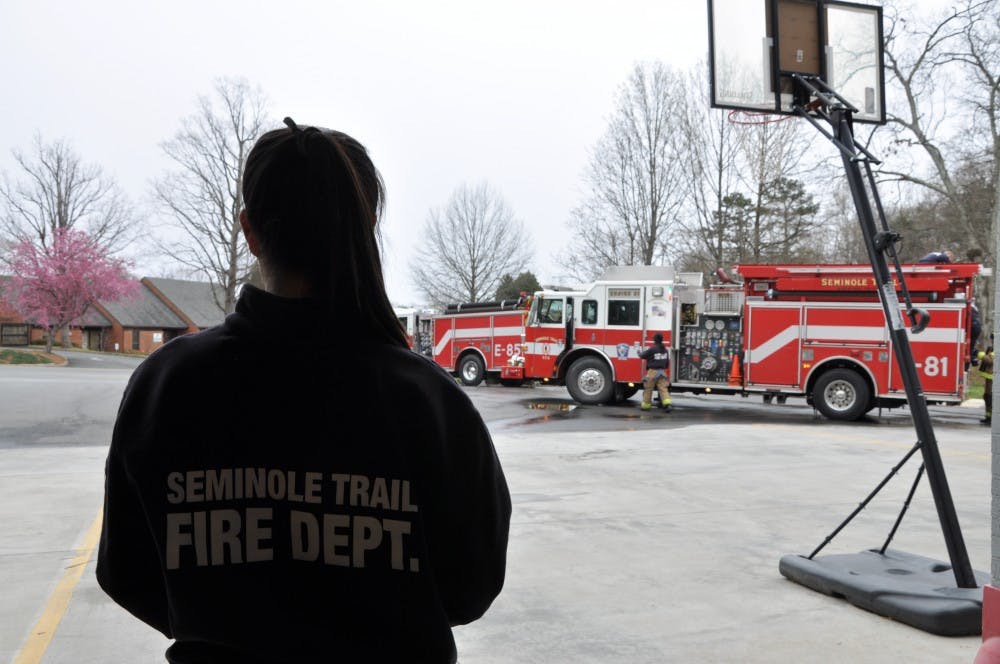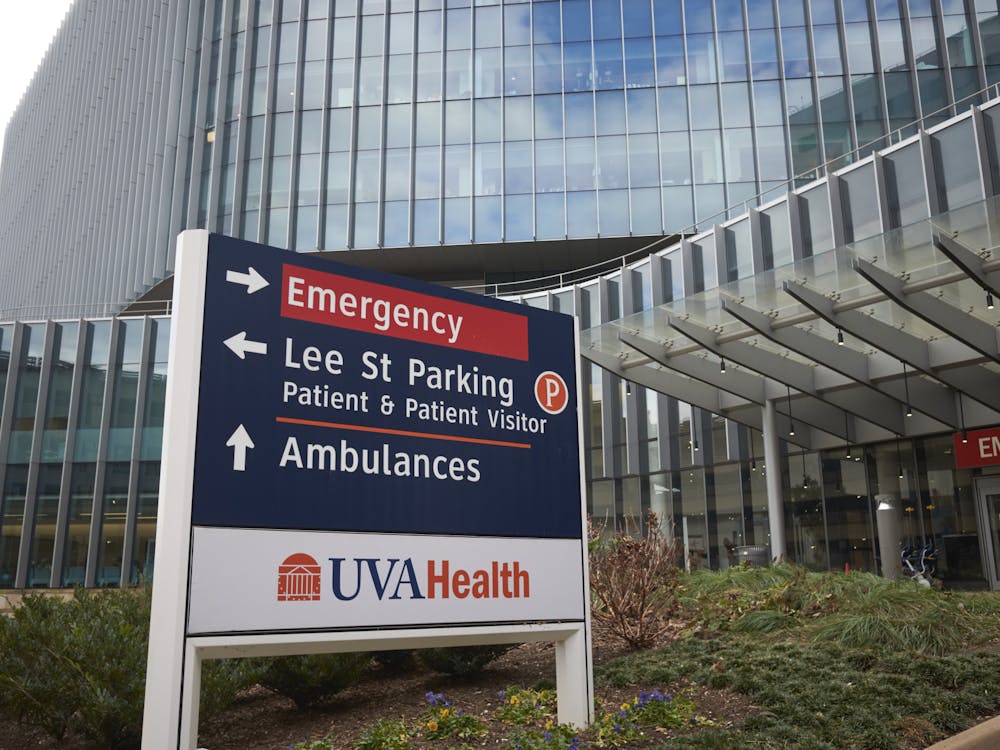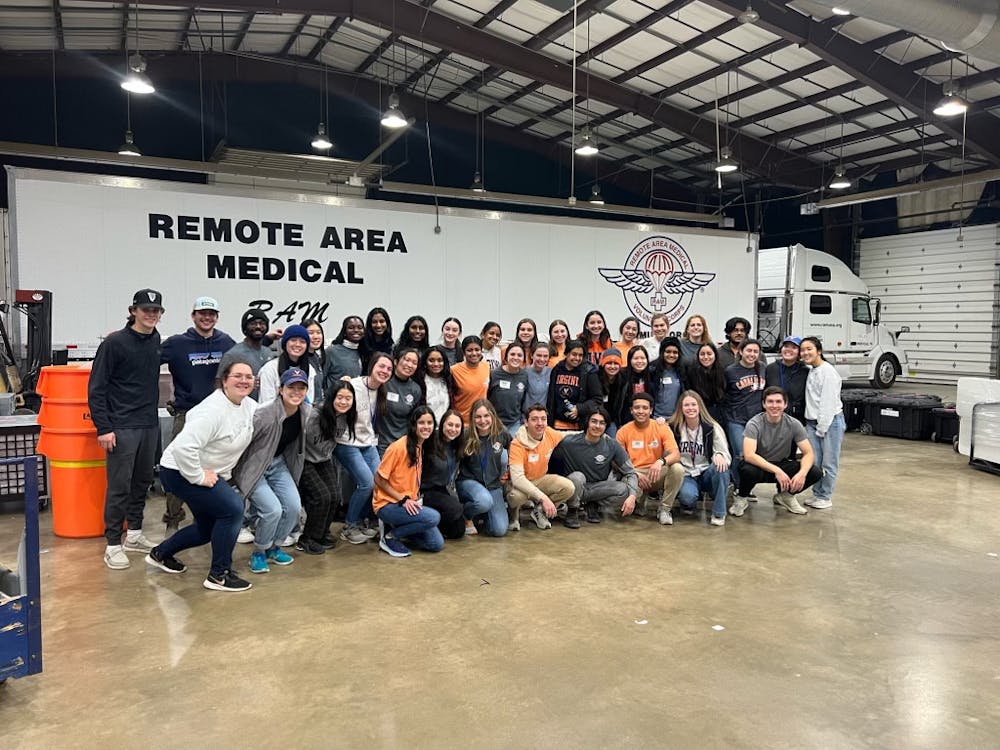Both Charlottesville-Albemarle Rescue Squad and the Seminole Trail Volunteer Fire Department serve the greater Charlottesville area through volunteer Emergency Medical Technicians and Firefighters. Many of these volunteers who undergo training to provide immediate medical care in emergencies are students at the University.
Julianna Kang is a third-year College student who currently serves as a volunteer firefighter and EMT at the Seminole Trail Fire Department and previously volunteered as an EMT at CARS.
“EMT-B is the basic level of certification you need to be an EMT and this is what most organizations encourage you to get,” Kang said. “There are also more advanced levels of certification like EMT-Intermediate and EMT-Paramedic.”
Like Kang, second-year Engineering student Charles Moens serves as a volunteer firefighter at Seminole Trail and became EMT-B certified during his first year at the University. Moens additionally serves as an associate ambulance driver at CARS and while he does not have any plans for a career in healthcare, he maintains the skills gained through EMT training are valuable.
“Being an EMT really complements firefighting and lets me serve the community in another capacity,” Moens said.
Moens said CARS and Seminole Trail require volunteers to staff at least one 12-hour shift a week, with a longer shift assigned at regular intervals.
“At CARS … drivers can get 12 to 14 hour shifts with a 24 hour weekend shift every 6 or 7 weeks,” Moens said. “Shift requirements for Seminole Trail are 12 hours a week every week on an assigned duty night and one 48-hour weekend shift every 5 weeks.”
A typical 12-hour night shift starts at 6:00 p.m. and ends 6:00 a.m. the following morning.
She noted that volunteers typically arrive 15 minutes before their shift starts to ready their gear and check the condition of equipment. Volunteers have dinner together between 6:30 p.m. and 7:00 p.m. and train until quiet hours start at 10:00 p.m.
Anytime after 6:00 p.m., volunteers can respond to a call, although the actual frequency of calls varies.
“Sometimes we get them back to back,” Kang said. “Sometimes we don’t get any. It just depends on the day.”
One of Kang’s most memorable calls was a stabbing incident she responded to while she was in the process of being released as an EMT. Two patients were injured — one had fallen down a building from the second or third story and the other had several knife wounds and a serious head wound.
No one on the scene spoke English and Kang helped translate the patients’ Spanish until they were boarded onto the ambulance. Kang said that this case was likely one of her most notable cases because it was one of the calls where she had to take command in a serious situation.
“It made me realize even more that this is what I want to do,” Kang said.
While the firefighting aspect is challenging for Kang because she is physically smaller than many of the station’s staff, she says the community is encouraging and understanding.
“You develop really close bonds to the people here and they are some of my best friends,” Moens said. “You have to trust the person you’re going into a life-threatening situation with.”
Whereas organizations like Madison House’s Medical Services Program allow for patient engagement, Kang notes that being an EMT allows for more involved interactions and firsthand experience with medical issues.
“[Medical Services] was a good experience but here we get to directly provide patient care,” Kang said. “We can do CPR, we can suction, we can bandage people up.”
Kang said that volunteering with the station has given her a strong sense of accomplishment despite the difficulties of the job. She noted that some volunteers at the station have been doing so since they themselves were students at the University.
For Moens, the volunteering experience has also been transformative.
“This is the most impactful thing I’ve done in my life and I don’t mean that as a hyperbole,” Moens said. “I think it has truly made me a better, more compassionate person.”





